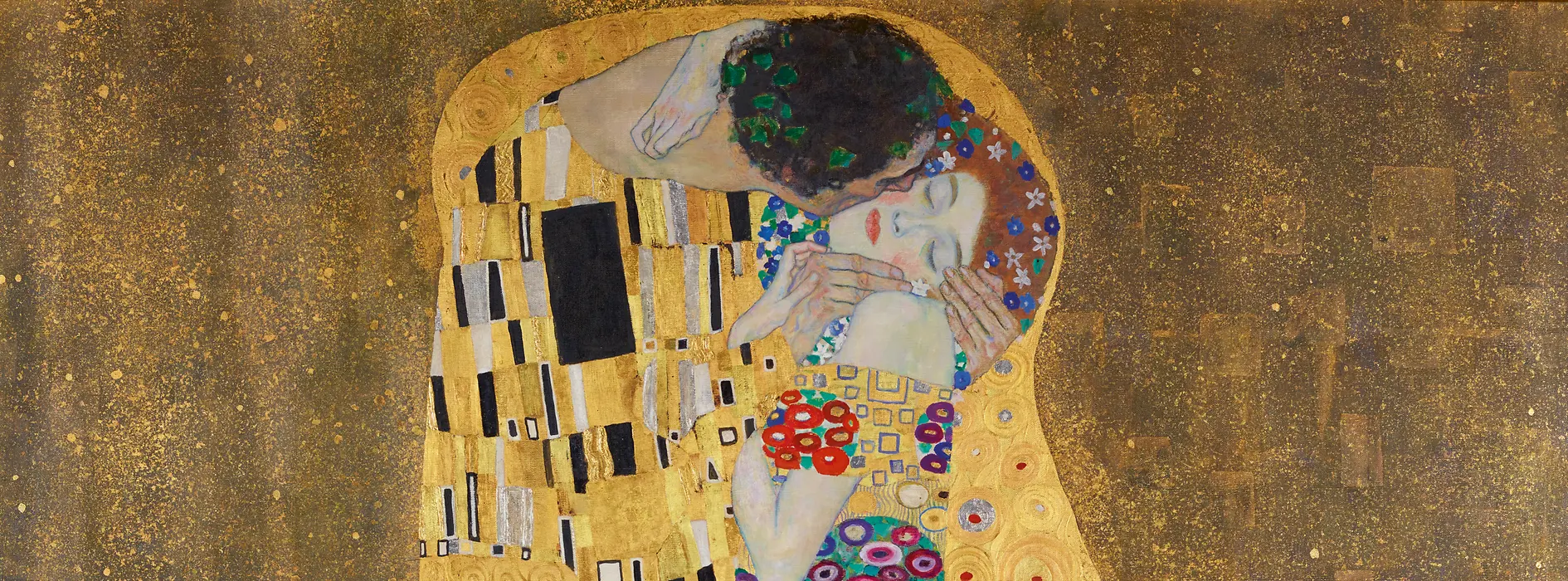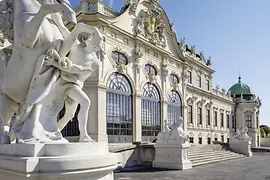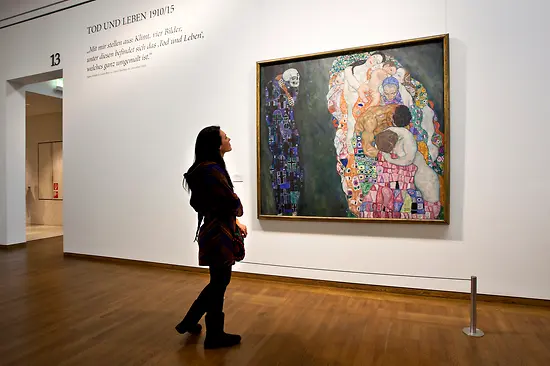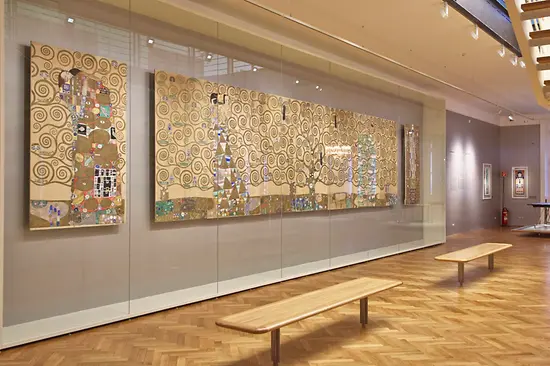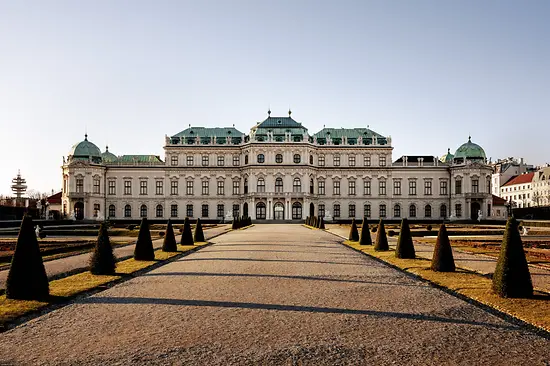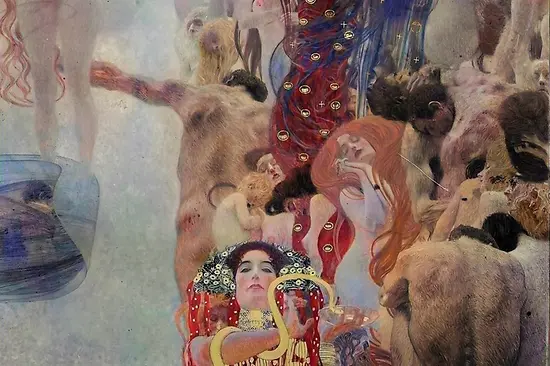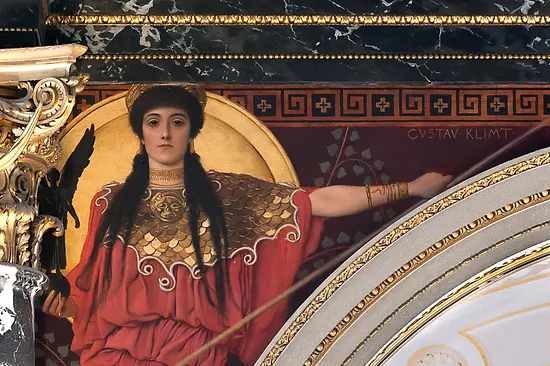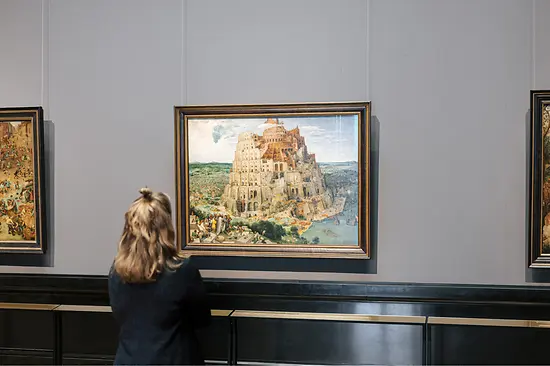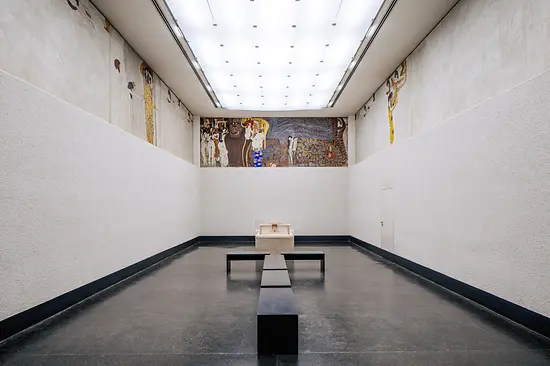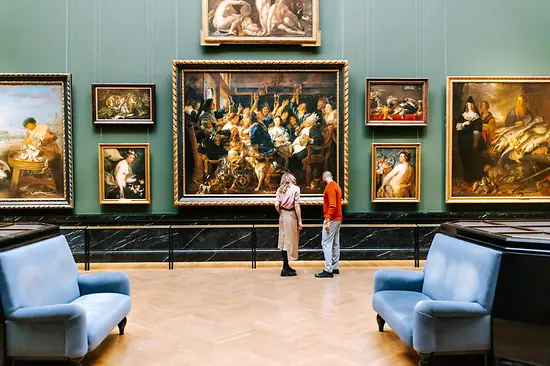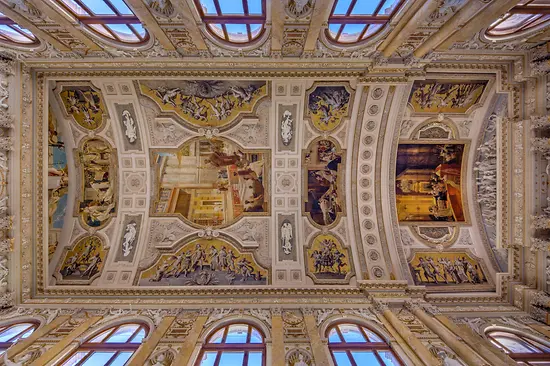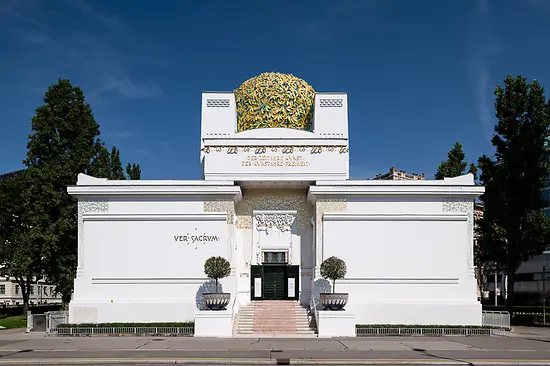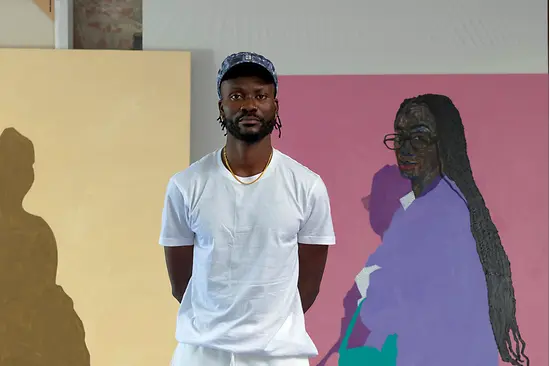A Kiss makes History
According to a contemporary rumor, the couple depicted in "The Kiss" are the artist himself and his lifelong partner Emilie Flöge, whose fashion salon was designed by Gustav Klimt and Kolo Moser.
Klimt’s patronage and some paintings in which he depicted his lover not only secured Madame Flöge a place in Viennese society, but also a permanent place in art history. His relationship to Emilie did not prevent the master, however, from starting affairs with some of his models.
With "The Kiss," which was bought in 1908 by the Moderne Galerie and is now on permanent display at the Upper Belvedere, Klimt reached the pinnacle of his "golden" phase. An additional famous work of this period, "Judith I," is also exhibited at the Austrian Gallery, as is the "Lady with Hat and Boa," the painting "Johanna Staude" and a multitude of fascinating landscape paintings. These are mainly of the Attersee and its environs, the Upper Austrian Salzkammergut, where Klimt spent nearly every summer after 1900.
Gustav Klimt died on February 6, 1918 after a stroke. The master of ornaments and painter of alluring women was interred in an honorary tomb at the Hietzing Cemetery (13th district, Maxingstrasse 15, underground line: U4, Bus: 56 B; the tomb is in Group V/194/195).
A Palace for Art: The Belvedere
The Belvedere was built in 1721-22 by Johann Lukas von Hildebrandt as the summer residence for Prince Eugene of Savoy and is considered one of the most beautiful Baroque buildings in the world. In its beginnings, the Paintings Gallery which is housed in the palace, the former "Austrian Gallery," was supported in great measure by the Vienna Secession and thus by Gustav Klimt.
Here, you will not only find the largest collection of works by Gustav Klimt, but also masterworks by Egon Schiele and Oskar Kokoschka. Also, important works of the French Impressionism, the most important Biedermeier collection as well as highlights of the Baroque and Medieval Collection are accommodated here.
Today, there are special exhibitions in the Lower Belvedere and its Orangerie; one can also view the gala rooms. The museum itself has long been moved to the Upper Belvedere on the other end of the splendid garden and has become an important center for admirers of Klimt from all over the world.
- Prinz-Eugen-Straße 27, 1030 Wien
- info@belvedere.at
- https://www.belvedere.at
Comments
Please note: If visiting the Upper Belvedere, you must make a free reservation for a time slot for group travelers (from 10 people). https://www.belvedere.at/en/tourism-b2b
Monday to Sunday, 9.00 am - 6.00 pm
Email: booking@belvedere.at
Telephone: +43 1 795 57-333
Vienna City Card
- 1,50€ on the current entry ticket price (Upper Belvedere)
- 2,50€ on the current entry ticket price / 2in1 ticket (Upper and Lower Belvedere)
Buy now with discount:
Opening times
- daily, 09:00 - 18:00
Accessibility
no steps (Swinging doors 102 cm wide)
Parking spaces for people with disabilities
Parking space for visitors with disabilities in front of the entrance at Prinz-Eugen-Strasse 27, Parking: 10 am – 6 pm
Seeing eye dogs allowed
Wheelchair accessible restroom available.
Reduced admission for people with disabilities and assistants. "See differently" guided tours (tactile tours) in the Upper Belvedere for blind and visually impaired visitors. Video guides in Austrian Sign Language (OGS) and International Sign are available for deaf visitors.
2 elevators reachable via a ramp (staff will provide assistance), wheelchairs available at the cloakroom.
Shop/café: a few steps (staff will provide assistance).
Additional information about your accessible visit can be found at:
https://www.belvedere.at/en/your-visit/inclusion-museum
Other stations of the Klimt Walk:
